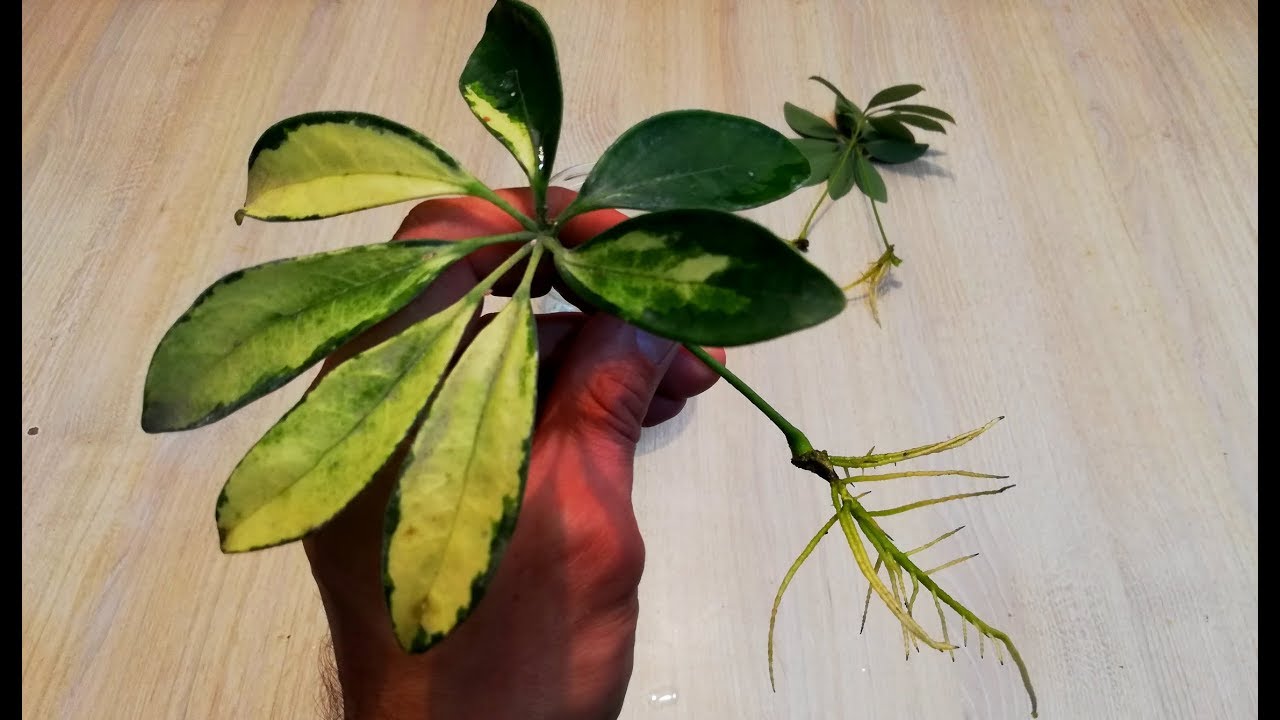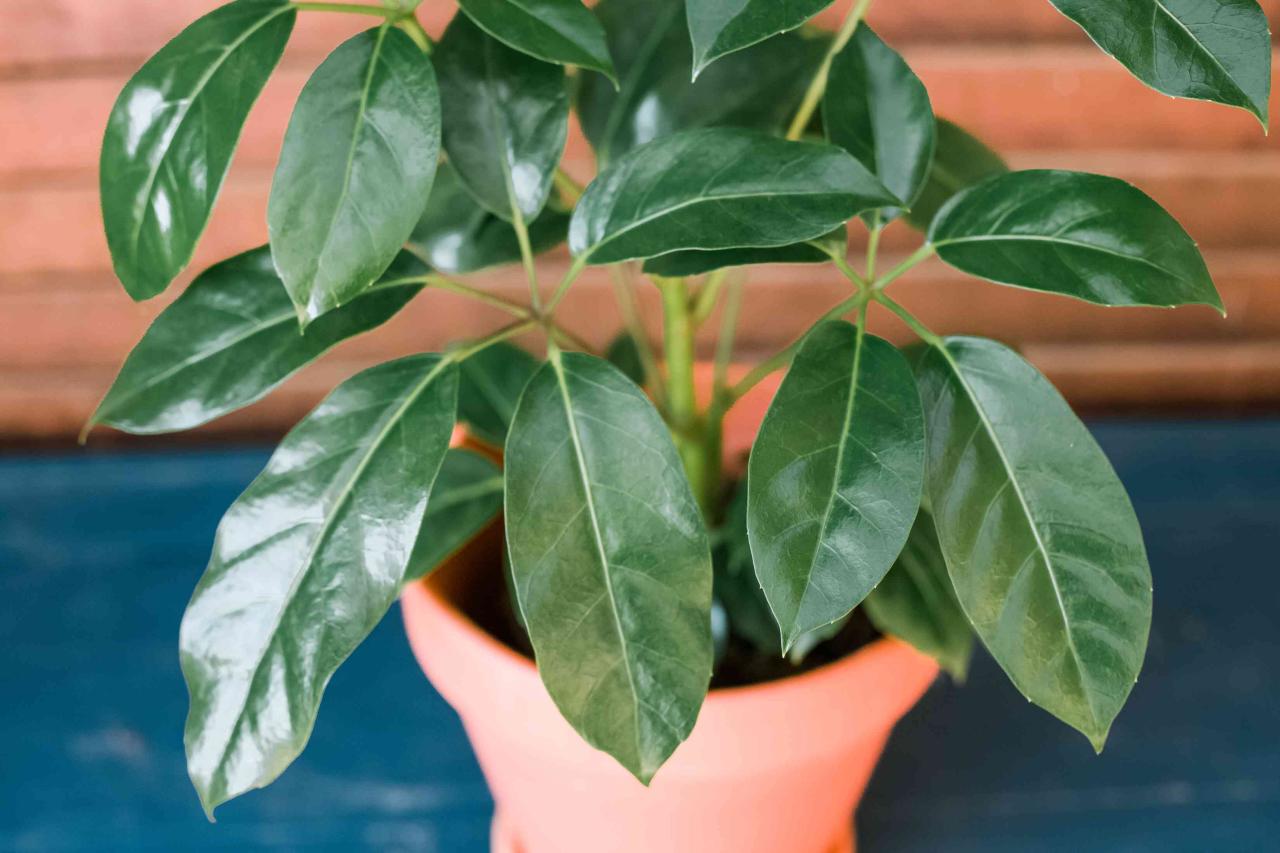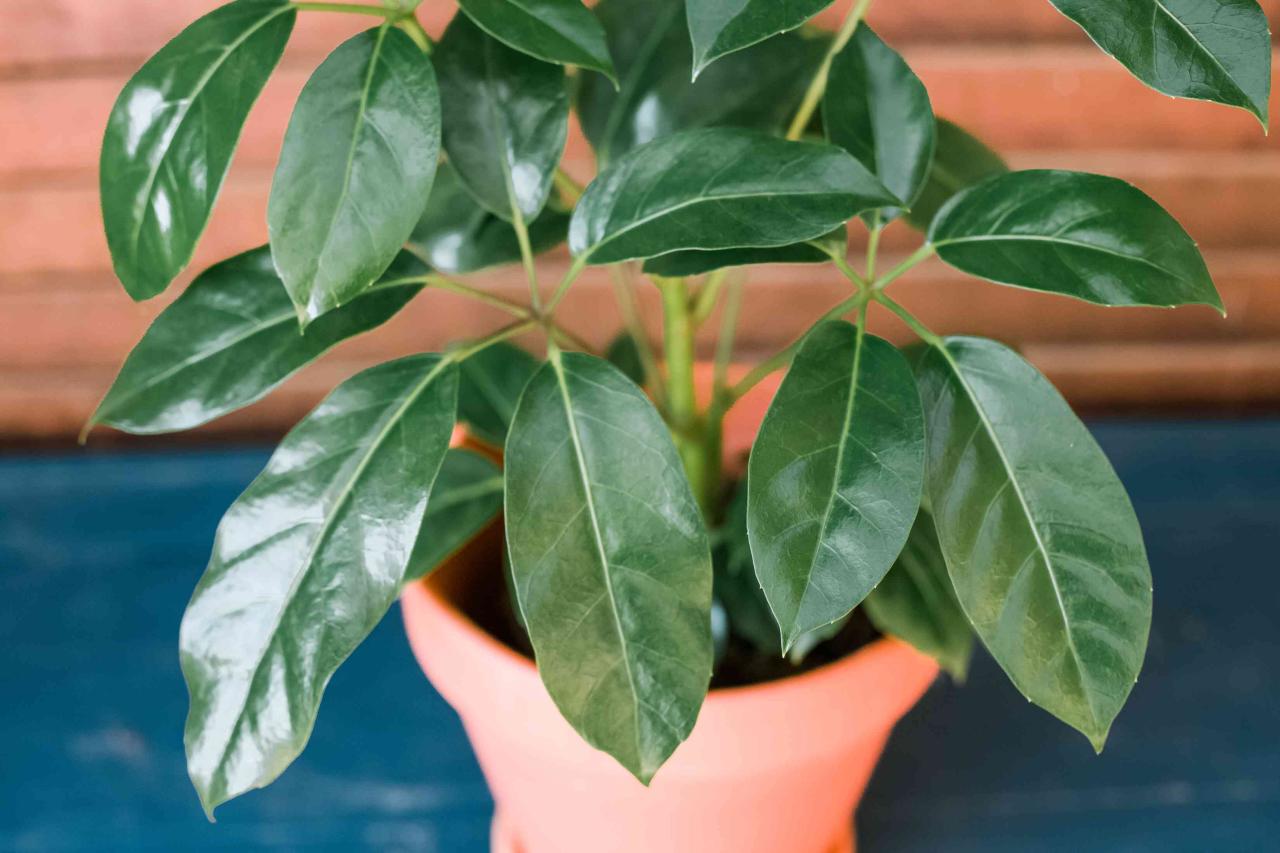How to Expand Your Schefflera Garden with These Effective Methods: Schefflera, with its lush, vibrant foliage, adds a touch of tropical elegance to any garden. But cultivating a thriving Schefflera garden requires more than just planting a few seedlings.
This comprehensive guide delves into the intricacies of Schefflera growth, explores effective propagation techniques, and provides practical tips for maintaining a flourishing Schefflera oasis.
From understanding the ideal growing conditions to mastering propagation methods like cuttings, air layering, and seed starting, this guide equips you with the knowledge to expand your Schefflera collection. Discover the best practices for preparing cuttings, and learn how to create a step-by-step guide for successful propagation.
We’ll also explore the advantages and disadvantages of each method, allowing you to choose the best approach for your garden.
Understanding Schefflera Growth

Schefflera plants, also known as umbrella trees, are popular houseplants due to their attractive foliage and relative ease of care. Understanding the ideal growing conditions for Schefflera is crucial for maximizing their growth and ensuring their health. This guide will delve into the optimal conditions for Schefflera growth, including light, temperature, and humidity requirements.
We will also explore the different propagation methods for Schefflera, including cuttings, air layering, and seed starting. Finally, we will discuss best practices for preparing Schefflera cuttings for propagation.
Expanding your Schefflera garden can be a rewarding experience, especially when you consider the plant’s resilience and ability to thrive in various conditions. To get the most out of your Schefflera, you can explore techniques like propagation and pruning.
For inspiration, consider visiting Explore Harvest Moon Orchard: Your Guide to Seasonal Fun for tips on nurturing plants throughout the year. The insights gained from this resource can be applied to your Schefflera, helping you create a lush and vibrant indoor oasis.
Light Requirements
Schefflera plants thrive in bright, indirect light. They can tolerate some direct sunlight, but it is best to avoid exposing them to intense, midday sun, as this can scorch their leaves. A south-facing window with a sheer curtain or a bright east- or west-facing window is ideal.
In low-light conditions, Schefflera plants will grow more slowly and may develop leggy stems.
Temperature Requirements
Schefflera plants prefer warm temperatures, ideally between 65-75°F (18-24°C). They can tolerate slightly cooler temperatures, but they should not be exposed to temperatures below 50°F (10°C). During the winter months, it is important to keep Schefflera plants away from cold drafts.
Humidity Requirements
Schefflera plants prefer moderate to high humidity levels. In dry environments, their leaves may start to brown and drop. To increase humidity, you can place a humidifier near the plant, group plants together, or place the plant on a pebble tray filled with water.
Propagation Methods
Schefflera plants can be propagated through cuttings, air layering, and seed starting.
Cuttings
Cuttings are the most common method of propagating Schefflera plants. To take a cutting, use a sharp, clean knife or pair of scissors to cut a 4-6 inch section from the tip of a healthy stem. Remove the leaves from the bottom 2 inches of the stem.
Air Layering
Air layering is another method of propagating Schefflera plants. To air layer a Schefflera, you will need to make a cut in the stem and then wrap the cut area with moist sphagnum moss. The moss should be kept moist and, after a few weeks, roots should form.
Once the roots have formed, you can cut the stem below the roots and plant the new plant.
Seed Starting
Schefflera plants can also be propagated from seed. However, this method is less common than cuttings or air layering. To start Schefflera plants from seed, you will need to sow the seeds in a seed tray filled with seed-starting mix.
Keep the seeds moist and warm, and they should germinate in a few weeks.
Preparing Schefflera Cuttings for Propagation
When preparing Schefflera cuttings for propagation, it is important to use sharp, clean tools to prevent the spread of disease. Cuttings should be taken from healthy, mature stems. The leaves from the bottom 2 inches of the stem should be removed to encourage root growth.
To promote root development, you can dip the cut end of the cutting in rooting hormone. Rooting hormone is a powder or liquid that contains plant hormones that stimulate root growth. After dipping the cutting in rooting hormone, plant the cutting in a pot filled with a well-draining potting mix.
Keep the potting mix moist, and place the pot in a warm, bright location.
Effective Expansion Techniques
Expanding your Schefflera garden involves propagation methods that allow you to create new plants from existing ones. This section will guide you through two popular techniques: propagation from cuttings and air layering. These methods are relatively simple and can be successfully performed at home.
Propagation from Cuttings
Propagation from cuttings is a common method for Schefflera, involving the use of stem sections to produce new plants. This technique is effective and offers a straightforward way to multiply your Schefflera collection. Here’s a step-by-step guide:
- Select healthy cuttings:Choose healthy, mature stems from your Schefflera plant. The ideal cutting should be about 4-6 inches long and have at least three nodes (the points where leaves grow).
- Prepare the cuttings:Use a sharp knife or pruning shears to make a clean cut just below a node. Remove the leaves from the bottom 1-2 inches of the cutting, leaving a few leaves at the top.
- Apply rooting hormone (optional):Dipping the cut end of the cutting in rooting hormone can encourage root development. This step is not mandatory but can increase the success rate.
- Potting the cuttings:Prepare a pot with a well-draining potting mix. Make a hole in the mix and insert the cutting, ensuring the nodes are buried in the soil. Water the cutting thoroughly.
- Provide ideal conditions:Place the potted cutting in a warm, bright location with indirect sunlight. Cover the pot with a plastic bag or dome to create a humid environment. This helps maintain moisture and encourages root growth.
- Maintain moisture:Regularly mist the cuttings and ensure the soil remains moist, but not soggy. Avoid overwatering, which can lead to root rot.
- Monitor for root development:After a few weeks, gently tug on the cutting to check for resistance. This indicates root development. Once the cutting is established, gradually acclimate it to the open air.
Air Layering, How to Expand Your Schefflera Garden with These Effective Methods
Air layering is another effective technique for Schefflera propagation. This method involves encouraging root development on a stem while it is still attached to the parent plant. Here’s a detailed explanation of the process:
- Choose a suitable stem:Select a healthy, mature stem on your Schefflera plant. The stem should be at least 1/2 inch thick and have several leaves.
- Prepare the stem:Make a circular cut about 1/2 inch deep into the stem, removing a strip of bark around the stem. This exposes the cambium layer, where root development will occur.
- Apply rooting hormone (optional):Applying rooting hormone to the exposed area can stimulate root growth. This step is not mandatory but can increase the success rate.
- Wrap the stem:Wrap the exposed area with moist sphagnum moss and secure it with plastic wrap. This creates a humid environment that promotes root growth.
- Maintain moisture:Regularly mist the moss to keep it moist. You can also use a plastic bag to cover the wrapped area, creating a more humid environment.
- Monitor for root development:After a few weeks, check the moss for root development. Once roots have formed, cut the stem below the wrapped area and pot the new plant.
Comparison of Propagation Methods
Here’s a table comparing the advantages and disadvantages of propagation from cuttings and air layering:
Method |
Advantages |
Disadvantages |
|---|---|---|
Propagation from Cuttings |
|
|
Air Layering |
|
|
Maintaining a Thriving Schefflera Garden
A thriving Schefflera garden requires consistent care and attention. By understanding the plant’s needs and implementing appropriate techniques, you can ensure its healthy growth and longevity.
Watering and Fertilizing
Regular watering and fertilization are crucial for maintaining the health of your Schefflera. These practices ensure that the plant receives the necessary nutrients and moisture for optimal growth.
Expanding your Schefflera garden can be achieved through various methods, including cuttings and air layering. While these techniques are effective, you might also find inspiration from other plant propagation methods. For instance, if you’re interested in carnivorous plants, you can explore the fascinating world of Venus flytraps and learn how to propagate them using techniques outlined in this article: Master Venus Fly Trap Propagation With These Tried-and-Tested Techniques.
The knowledge gained from propagating Venus flytraps can be applied to other plants, including Scheffleras, as the fundamental principles of plant propagation remain similar across species.
- Watering:Scheffleras prefer moist soil, but they are also susceptible to overwatering. Allow the top inch of soil to dry out between waterings, and avoid letting the soil become completely saturated. During the growing season (spring and summer), water more frequently.
In the winter, reduce watering to once every two weeks.
- Fertilizing:Scheffleras benefit from regular fertilization, especially during the growing season. Use a balanced liquid fertilizer diluted to half strength and apply it every two weeks. You can also use slow-release fertilizer granules for longer-lasting results.
Common Pests and Diseases
Scheffleras are relatively pest-resistant, but they can be susceptible to certain pests and diseases. Early detection and prompt treatment are essential for preventing serious damage.
- Common Pests:Spider mites, mealybugs, and scale insects are common pests that can infest Scheffleras. These pests can be controlled with insecticidal soap or neem oil spray.
- Common Diseases:Leaf spot, root rot, and powdery mildew are common diseases that can affect Scheffleras. These diseases can be prevented by ensuring good air circulation and avoiding overwatering. Fungal diseases can be treated with fungicides.
Pruning
Pruning is essential for maintaining the shape and promoting bushier growth of Scheffleras.
- Shape Maintenance:Regular pruning helps to maintain the desired shape of the plant and remove any dead or damaged branches. Prune the plant in late winter or early spring before new growth emerges.
- Encouraging Bushier Growth:Pinch back the tips of the branches to encourage branching and bushier growth. This technique stimulates the plant to produce more leaves and stems.
Schefflera Garden Design and Aesthetics: How To Expand Your Schefflera Garden With These Effective Methods
A Schefflera garden can be much more than just a collection of plants; it can be a stunning visual masterpiece. By thoughtfully designing and arranging your Schefflera plants, you can create a captivating space that reflects your personal style and enhances the overall beauty of your garden.
Schefflera Garden Arrangement Ideas
The placement and arrangement of Schefflera plants significantly influence the overall aesthetic appeal of your garden. Here are some creative ways to display and arrange Schefflera plants:
- Focal Point:Use a large, mature Schefflera plant as a focal point in your garden. Its lush foliage and striking silhouette can draw attention and create a sense of grandeur.
- Layered Planting:Create visual interest by layering Schefflera plants of different sizes and varieties. Place taller Schefflera plants in the background, with shorter varieties in the foreground.
- Container Gardens:Schefflera plants thrive in containers, making them ideal for creating portable garden displays. Experiment with different container sizes and shapes to create unique arrangements.
- Vertical Gardens:Schefflera plants can be used to create stunning vertical gardens. Train them to climb trellises or walls, adding a touch of greenery and privacy to your space.
- Grouping:Group Schefflera plants together to create a sense of unity and visual impact. You can use different varieties or the same variety in different sizes to create a harmonious display.
Schefflera Varieties and Their Unique Characteristics
The diverse range of Schefflera varieties offers a wide spectrum of colors, textures, and growth habits, allowing you to create a truly unique and visually appealing Schefflera garden. Here is a table showcasing some popular Schefflera varieties and their distinctive characteristics:
Variety |
Characteristics |
|---|---|
Schefflera arboricola (Dwarf Schefflera) |
Compact size, glossy green leaves, tolerant of low light conditions |
Schefflera actinophylla (Umbrella Tree) |
Large, umbrella-shaped foliage, striking red berries, prefers bright light |
Schefflera ‘Gold Capella’ |
Variegated leaves with yellow margins, adds a touch of brightness to the garden |
Schefflera ‘Variegata’ |
Creamy white variegation on leaves, creates a contrasting effect in the garden |
Schefflera ‘Amate’ |
Deep green leaves with a leathery texture, adds a touch of sophistication to the garden |
Incorporating Schefflera Plants into Different Garden Styles
Schefflera plants can seamlessly blend into various garden styles, adding a touch of elegance and natural beauty. Here are some ideas for incorporating Schefflera plants into different garden styles:
- Modern Garden:Use Schefflera plants with sleek, geometric foliage to create a modern and minimalist aesthetic. Consider planting Schefflera ‘Amate’ or Schefflera ‘Variegata’ in minimalist containers.
- Tropical Garden:Schefflera plants are a natural fit for tropical gardens, adding a lush and vibrant touch. Plant Schefflera actinophylla (Umbrella Tree) in large containers or directly in the ground to create a tropical oasis.
- Traditional Garden:Schefflera plants can complement traditional garden styles by adding a touch of greenery and texture. Plant Schefflera arboricola (Dwarf Schefflera) in pots or directly in the ground to create a classic and elegant look.
Ending Remarks

Expanding your Schefflera garden is a rewarding journey, filled with the joy of witnessing these captivating plants thrive. By understanding their needs, implementing effective propagation techniques, and incorporating creative design elements, you can transform your garden into a verdant paradise.
Remember, the key to success lies in providing your Schefflera with the optimal care, allowing them to flourish and enhance the beauty of your outdoor space.
Questions and Answers
What are the most common Schefflera pests and diseases?
Common Schefflera pests include spider mites, mealybugs, and scale insects. Diseases like root rot and leaf spot can also affect Schefflera.
How often should I fertilize my Schefflera?
Fertilize your Schefflera during the growing season (spring and summer) every 2-4 weeks with a balanced liquid fertilizer.
Can I propagate Schefflera from seeds?
While possible, propagating Schefflera from seeds is less common. Cuttings and air layering are more reliable and efficient methods.
